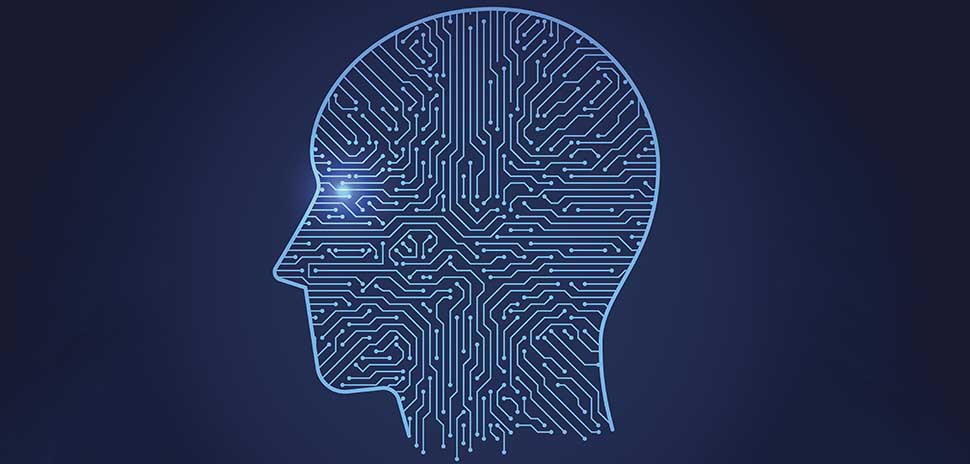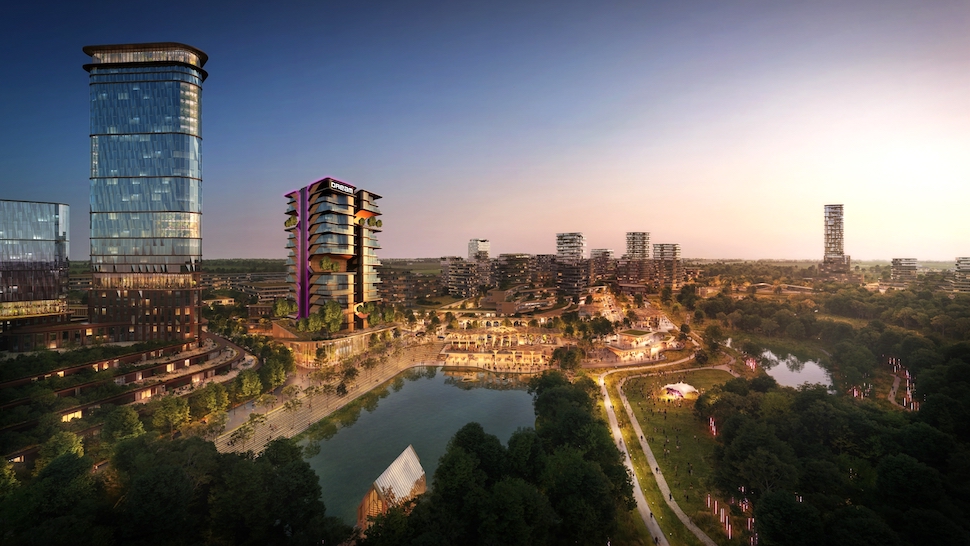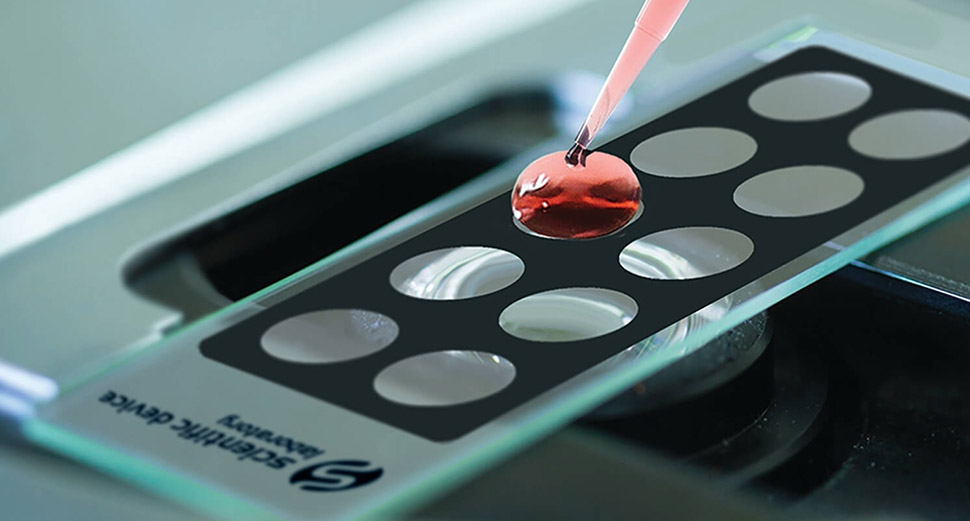![]() Dallas’ Matt Stevenson has a long-abiding interest in computer and artificial intelligence going back to his college days at the University of Texas at Dallas.
Dallas’ Matt Stevenson has a long-abiding interest in computer and artificial intelligence going back to his college days at the University of Texas at Dallas.
He began working on financial and actuarial systems and realized machine learning, a data-driven approach to AI, was surpassing traditional hand-crafted rule- and statistics-based models.The technology was in his words, “the start of a data-revolution.”
He continued learning about machine learning and begin tinkering with embedded devices and data-collecting sensors, such as one of Stevenson’s projects from that time — a wearable computer on a belt including Wi-Fi, sensors, haptic feedback, and other plug-in enabled devices.
Stevenson joined up with Hanson Robotics as the AI development lead on a team creating the world’s most physically lifelike humanoid robots, Bina48. Hanson Robotics worked with the Terasem Movement Foundation to create Bina48.
In 2011, he began working with Richard Margolin at the founding of RoboKind, a Dallas-based company dedicated to using robotics and AI for social good. Stevenson served as chief information officer for RoboKind, helping oversee the company’s growth. It now has deployed robots in schools across the U.S. teaching autistic children emotional and behavioral understanding and social skills.
After leaving RoboKind to become a deep learning and data science consultant, his arc has come full circle in a way.
Stevenson is again working with the Terasem Movement Foundation on a new project based on Bina48. The project’s goal is to power the robot with state-of-the-art deep learning that will allow it to use new data and human interaction to learn and improve on its own.
Stevenson took the time to speak with Dallas Innovates about Bina48, deep learning systems, neural networks, and where AI is heading.
Tell me about Bina48.
Bina48 was built in 2009 for the Terasem Movement Foundation. Bina48 is a lifelike robot modeled after Bina Rothblatt. A lot of personal information was collected from Bina through emails, documents, interviews, videos, and other sources into a Mindfile. Bina48’s AI uses the Mindfile data to converse and behave as the real Bina would. As more data is collected and Bina48’s algorithms improve, she will become more and more like the real Bina.
The original AI for Bina48 is able to learn and improve in a very limited way. While it is built from systems using machine learning, those systems are connected in a static, unchanging architecture. The individual systems can improve, but they can never improve how they work together.
Along with improving the AI itself, I’m building a pipeline for collecting, cleaning, and annotating new Mindfile data, itself powered with some AI tools.
The new AI is using deep neural networks to replace large parts of the system. These DNNs can learn much more from the data, can change and improve in much more flexible ways.
Along with improving the AI itself, I’m building a pipeline for collecting, cleaning, and annotating new Mindfile data, itself powered with some AI tools. This will allow more streamlined processing so new data can be collected much faster with less human effort and is higher-quality data for machine learning.
(Editor’s note: last year Bina48 passed a class on the philosophy of love at Notre Dame de Namur University making it the first AI-powered robot to complete a college course.)
How does the Terasem Movement Foundation fit into the Bina48 project?
The Terasem Movement Foundation is a very future-focused nonprofit foundation with the goal of greatly extending human life through bioscience, nanotechnology, and artificial intelligence, with a goal of digitally downloading and running human consciousness.
The Terasem Movement promotes research, education, and public awareness on topics of human longevity and building safe and ethical AI.
Bina48 was created to demonstrate the potential for using a Mindfile and AI to preserve consciousness.
Bina48 is also used for raising public awareness on different technological-social issues.
As part of the current upgrades, we are training Bina48 with a lot of new data about issues of race and discrimination.
As part of the current upgrades, we are training Bina48 with a lot of new data about issues of race and discrimination. This is an effort to build less biased AI and promote more discussion about the danger and risks of racially-biased AI and the challenges of creating AI that is not racially biased.
Most of today’s AI was built from limited datasets, with data typically coming from white, male, English-speaking engineers, and as such speech and face recognition systems often work best for white English-speaking men. As we make AI to assist assessing loan risk or criminal risk, there is a lot of risk of the AI learning a bias from racially-biased historic data.
How do you explain deep learning systems and neural networks to a general audience?
Deep learning is a subfield of machine learning involving large neural networks where the nodes are organized in a hierarchical structure. The structure of the nodes allows the network to learn abstract hierarchical features from the data on its own. Deep learning models are reusable general-purpose systems, that can learn from data how to solve a specific task. This is different from task-specific AI that is engineered to solve only one task.
Early face detection systems were task-specific, designed for the single purpose of identifying a human face. Researchers spent countless hours studying human faces to find subtle geometric and statistical patterns to identify a face from a frontal view. To identify a face in a profile view, they had to start over and find a new set of geometric patterns.
A deep learning face detection system is a general deep learning system that is fed with lots of labeled pictures of faces at every orientation, and it learns from that data how to best identify the face. If you then need to identify cats or cars, you don’t need to build a new system, just train it with different pictures.
A deep learning system can improve from providing it more data. And they are general-purpose, so when researchers develop new neural network models, you can just feed it your data and compare it against the old model. Solving a specific problem becomes a matter of collecting the right data about it.
Solving a specific problem becomes a matter of collecting the right data about it.
Deep learning is about finding how to arrange nodes in a network so it can best learn from the data. There are convolutional neural networks that work well at finding spatial relationships from image data, and recurrent neural networks that are good at finding temporal relationships from audio or text. And there are tricks for adding nodes to act as memory units, logical gates, and attention mechanisms.
It has led to what is sometimes called “differentiable computing,” a new model of computing where programs are built entirely out of neural components instead of the conventional logical programming units. It is called differentiable computing because NNs [neural networks] rely on a differential calculus technique for their learning. The neural program is able to continually self-optimize and improve on its own after being written.
When a conventional computer [program] is written, it is built from incomplete information on a deadline, and what is produced is not the ideal program for solving the problem. The program can only be improved by a programmer. A deep neural network can be thought of as a system that can approximate any computer program.
A program written from neural components is really a neural network approximating the designed program. And through training it with the right data, it can change itself to best approximate the program we really want instead of what we initially designed.
What is involved in training neural networks?
Suppose you are making a network to determine if a blog post is in a given category, say if it is about cooking or not.
To run the NN, you convert the blog post to a sequence of numbers and feed the numbers into the nodes of the input layer. Each node has a weight value and simple transformation function. When a number is fed into a node it is multiplied by the weight and run through the transformation function. The output is a value between 0 and 1. The output layer will produce a final value where 1 means the post is about cooking and 0 means it is not.
To train the network, you need a bunch of blog posts that you have already classified. When you run a training post through the network you can compare the network’s output to the actual classification to determine an error amount. If I give the network a post about cooking, the expected output is 1. If the network outputs 0.85, there is a total error for this training instance of 0.15 that we want to eliminate. Training the network uses two key techniques. Back-propagation is a technique to determine how much an individual node contributed to the total error amount. And gradient descent is a technique to adjust the weight for a node to minimize its error.
As the network is trained on more and more data the node weights settle into just the right combination of values for solving the task. The weights amplified or dampen different parts of the document and combined them in complex ways as it moves through each layer to calculate the final output.
The network learns exactly what is in the data. The challenge becomes to find the best set of data to represent your problem. A bad dataset could have some hidden pattern the network is able to find instead of solving your problem. If you’re training a NN to classify pictures of dogs and cats, but your pictures of dogs were taken during clear skies and the picture of cats during cloudy days, your network could actually be learning to classify clear skies from cloudy skies instead of dogs and cats.
What does this project entail in terms of deep learning systems and neural networks?
The goal of this project is to upgrade the conversational AI with an end-to-end neural network. This will allow Bina48 to learn and greatly improve as more Mindfile data is collected. It will allow her to learn from other public datasets and enables her to take advantage of future advances in deep learning.
You are collecting more data from the person on whom Bina48 is modeled. Tell me about that process.
The Mindfile data consists of information in various forms, transcripts, documents, emails, videos. The data aims to capture opinions on a wide range of subjects and personal behaviors and mannerisms. This is used as Bina48’s knowledgebase. We are collecting new data about issues of race and Bina Rothblatt’s personal experiences growing up. Much of this will be collected through extensive interviews with Bina.
After the data is collected, samples need to be labeled and annotated for training the NN. I’ve set up online tools so the annotation can be done collaboratively by groups of university students we are working with. During this process, students are asked do simple tasks like write a question for a given paragraph, highlight key phrases in some text, or select the best answer for a question or best question for an answer.
This data will be used to train the NN to understand a question it is asked and learn how to provide a good answer as Bina would.
What is the long-term goal for this project?
The goal of this project is to setup Bina48 to use a deep learning system that can continue to improve from new data and to build an effective data pipeline to provide Bina48 with more data to learn from.
Are there practical applications, opportunities, or AI advancements coming out of the project?
Most of the research in this area of deep learning is focused on factual question answering systems that can answer specific questions from sources like Wikipedia articles. We are moving beyond that in building a system for more opinion-based question answering and conversation where finding the right response requires more abstraction and inference.
The dataset we’re creating sets up a more complex problem than other available question answering datasets. This data could be used by researchers to benchmark their models and lead to the development of more powerful models.
Where do you see machine learning and AI heading?
Machine learning and AI will continue to rapidly advance and every industry will be transformed. A new generation of enterprise-grade tools is being built to make deep learning available to businesses of all sizes, and new dedicated neural network hardware is being built to power it.
While there is a lot of promise and optimism around advances in deep learning, I think the next five years will be defined by the social and ethical issues arising from the use of AI and how we handle them.
While there is a lot of promise and optimism around advances in deep learning, I think the next five years will be defined by the social and ethical issues arising from the use of AI and how we handle them.
New AIs can mimic a person’s voice and handwriting and generate fake videos. We will have to rethink a lot of how we approach trust and authenticity.
AIs will be increasingly put in real-world control. As we adopt self-driving cars and have drones deliver our packages, we’ll be faced with difficult problems of fault and liability. What were philosophical ethical questions, like the Trolley Car Problem, will become immediate real-world problems. As we confront those problems we’ll expose cognitive biases and heuristics in our moral thinking which we’ll need to overcome.
As AIs are able to do more work, the questions of if and how to provide a universal basic income will become a prominent political issue, and along with it will be the potential for the concentration of automation ownership to greatly amplify wealth inequalities.
![]()
Get on the list.
Sign up to keep your eye on what’s new and next in Dallas-Fort Worth, every day.



































































